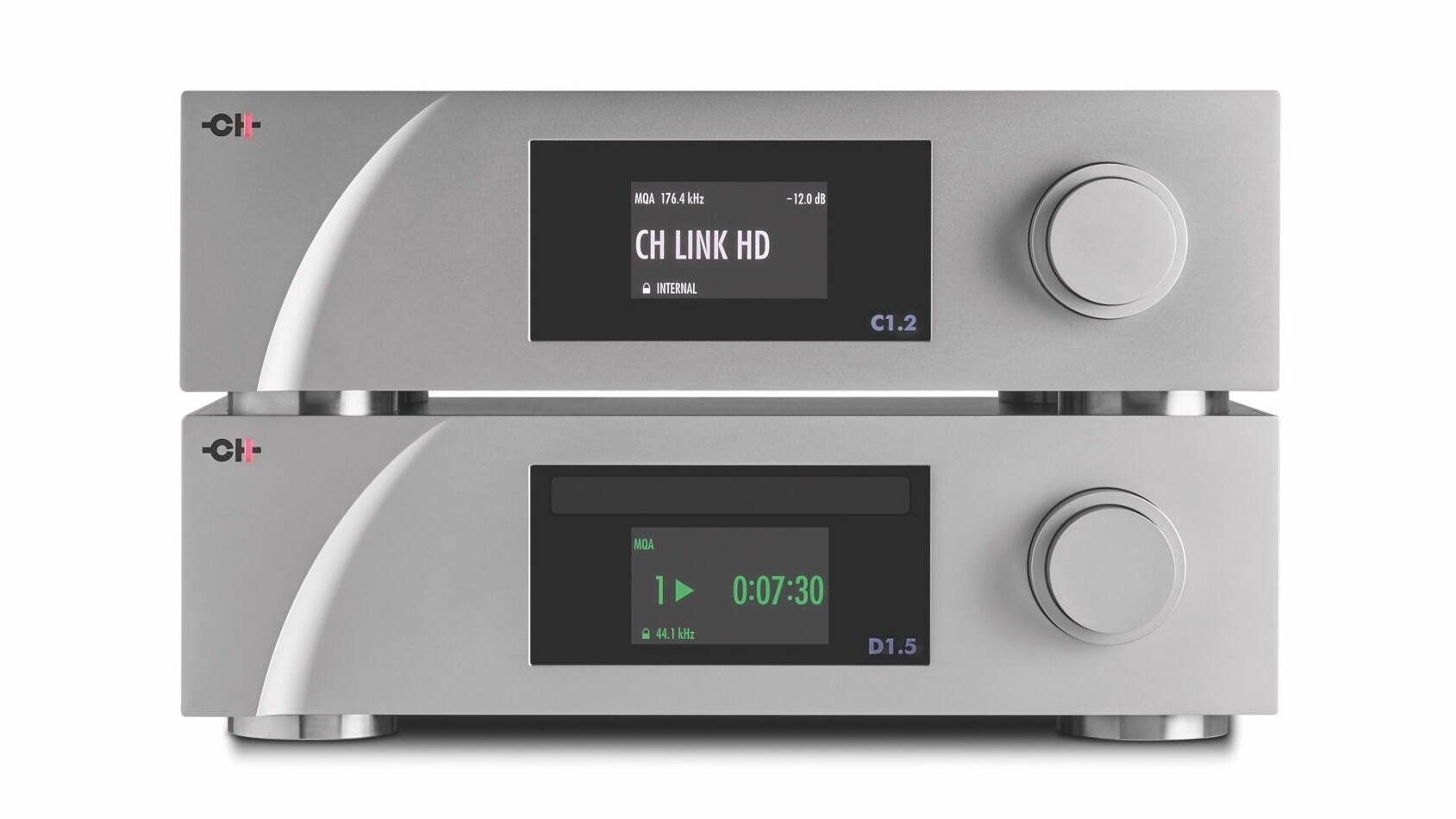I’m not going to start way back at the beginning, but it’s worth noting two things: I never particularly cottoned to the D1 as a player, especially a CD player. It was an excellent SACD transport (used with the C1 via the CH-Link HD), but its on-board DACs never really did it for me, especially in Red Book mode. Secondly, when the D1.5 arrived, all that changed. It wasn’t just a better transport. It didn’t only do a way better job with CD. The thing that really hit home was just how well the on-board DACs performed, narrowing the gap to the C1 significantly. Yes, the C1 still represented a worthwhile step up in terms of subtlety, information retrieval and overall separation, but it was no longer the slam-dunk that step up had once represented. That’s the context in which the C1.2 takes the field. It needs to trump both the performance of the D1.5 operating as a player, and the C1, either as a standalone unit or in combination the D1.5.

Listening to the C1 and the C1.2 using the D1.5 player/transport as a source allowed me to compare not just the gap between the C1 and the C1.2, but the performance gap between the D1.5 player and the D1.5/C1.2 pairing, in a single system, without chopping and changing equipment. Starting with the comparison between the two DACs, the first thing you are going to notice when switching from the C1 to the C1.2 is a significant change to the soundstage. First impression is that it has got bigger, simply because it is so much more present. But listen a bit more carefully and you’ll quickly realise that it’s not bigger but more defined, with more clearly located boundaries, greater depth and more definition of the space between the instruments. Those instruments are more dimensional and more solid. But this is much more than a cosmetic change. It is a pseudo visual metaphor for what has happened to the signal and the musical presentation as a whole. Play a disc from the Jordi Savall/Concert Des Nations, Beethoven Symphonies cycle (Revolution, Symphonies 1-5, AliaVox AVSA9937) on the C1.2 and the compact layout of the orchestra, with its narrow, deep and steeply banked arrangement is clearly apparent, both in the shape, depth and height of the soundstage, the proportions of the instrumental layout and (perhaps most of all) in the concentrated energy in the music.
Listen to the quietly pensive opening movement of the 4th Symphony and it’s not only the precise location but also the carefully measured (and clearly defined) level of each instrument that adds to the orchestral presence and the carefully nurtured sense of anticipation and tension. It’s this dual aspect to the increased performance that is the key to understanding what is happening here. The musical significance is obvious and undeniable. The mechanics behind it less so – which if you think about it, is no bad thing! But the clue lies in the spatial domain, even if the real import is contained in the time domain. In the same way that the C1.2 isolates spatial location, concentrating the sound generated by an instrument and preventing it bleeding into the space around it, the DAC isolates in the time domain. So just as an instrument has a more defined and more natural sense of location and scale, it’s not only the placement, but the start, amplitude and duration of each note that is far more precisely reproduced.
Joining the dots…
If you want to examine note weight, placement and length, there’s no better place to start than piano and a recent favourite has been Mitsuko Uchida’s concert recording of the Beethoven 4th Piano Concerto (Rattle and the Berliner Philharmoniker on the orchestra’s own label, BPHR 180243). Uchida’s achingly intense reading of the 2nd Movement, the shortest that Beethoven wrote in any of his piano concerti, runs nearly a minute and a half (around 33%!) longer than other versions – and with the same notes to play, that extra time is all in the spaces in between them. The result captures the utter, hopeless desolation of the piece, Beethoven’s response to his impending deafness. It is played with such quiet precision and delicacy, such calculated weight and attack to each and every note that it is brutally revealing of a system’s micro-dynamic and temporal integrity. Play it on the C1.2 and it achieves its full artistic intensity and impact.

